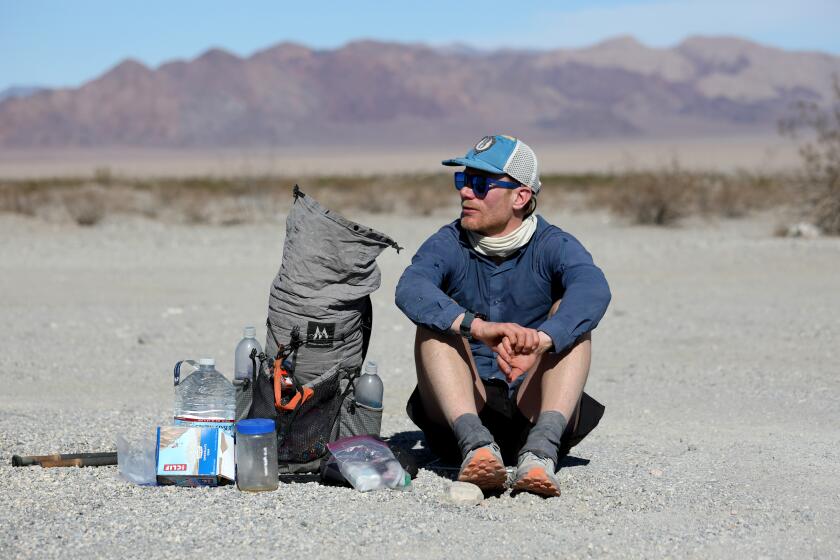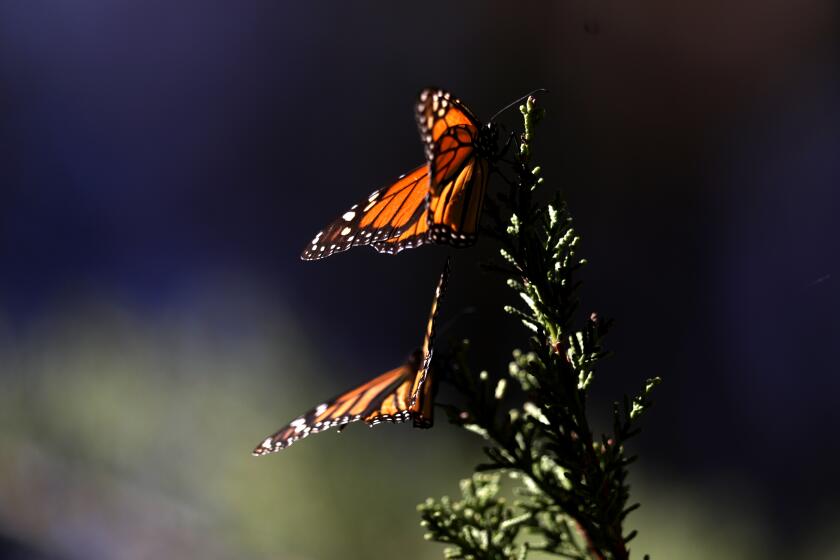She set out to walk every street in Santa Cruz and walked into the story of her life
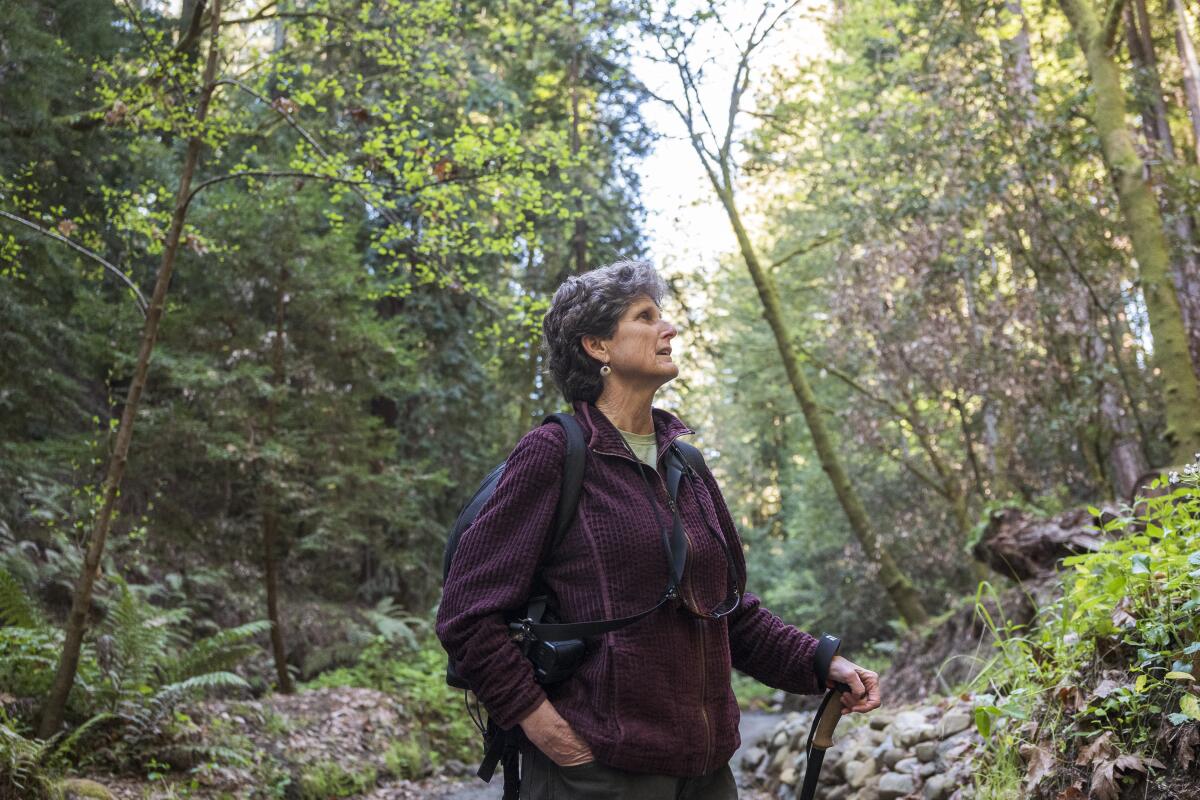
- Share via
SANTA CRUZ — It began as a whimsical notion that occurred to Angelica Glass during a bubble bath: She would walk every street in Santa Cruz County.
She had no idea it would unearth her past and change how she experienced life.
She started each walk from her home in this beach town where she has lived all her adult life. She noticed spiraling vines of wild cucumber dripping down fences and how they would bounce back like a spring if she pulled them.
She paused in front of garage doors painted with geometric patterns and studied the quirky metal sculptures on Hanover Street. She noted tree houses, graveyards, rope swings. She made lists of favorite road names, such as Easy Street, Squid Row and Young Love Avenue.
As she wandered, her mind went on its own rambles, throwing up odd memories.
She recalled herself as a little girl, stepping over a low fence and squeezing behind a hedge where each day she found a brown paper bag holding a peanut butter and jelly sandwich. It was cut on the diagonal, which thrilled her, and it came with a baggie full of chips and an apple. She devoured it all. She was often hungry.
As a child she hadn’t questioned where the lunches came from. They were just there. Now she wondered.
“What’s going on with you?” her wife of 23 years worriedly asked when Glass cried twice in one week, shortly after beginning the walks in 2013.

Brisk but pleasant, recently retired as a child welfare program manager in Santa Cruz County, Glass didn’t cry. She had always seen her strength as being able to say hard things as kindly as possible. She was pragmatic and not given to what she calls froufrou.
When other social workers said they didn’t believe in the system, she thought to herself, “It’s not God or Santa Claus. It’s not for us to believe or disbelieve. It exists and we have to do the best we can.”
She recalled her teenage self as a “tough girl,” a young lesbian with a half-shaved head who believed she could defend herself if jumped — never mind that she weighed 115 pounds.
But much of her past was vague and shapeless. She had always envied how other people could tell a story about their lives. She’d idly felt she was missing her own tale.
::
At her “retirement job” as a social worker at a hospital, Glass witnessed the same suffering she’d seen in her child welfare work: families traumatized for generations by poverty, addiction and abuse.
On her days off, she would walk more of Santa Cruz.
Her uncle died and left a small token of affection: $800. She wanted to buy something specific with the money and bought a camera to take on her walks.
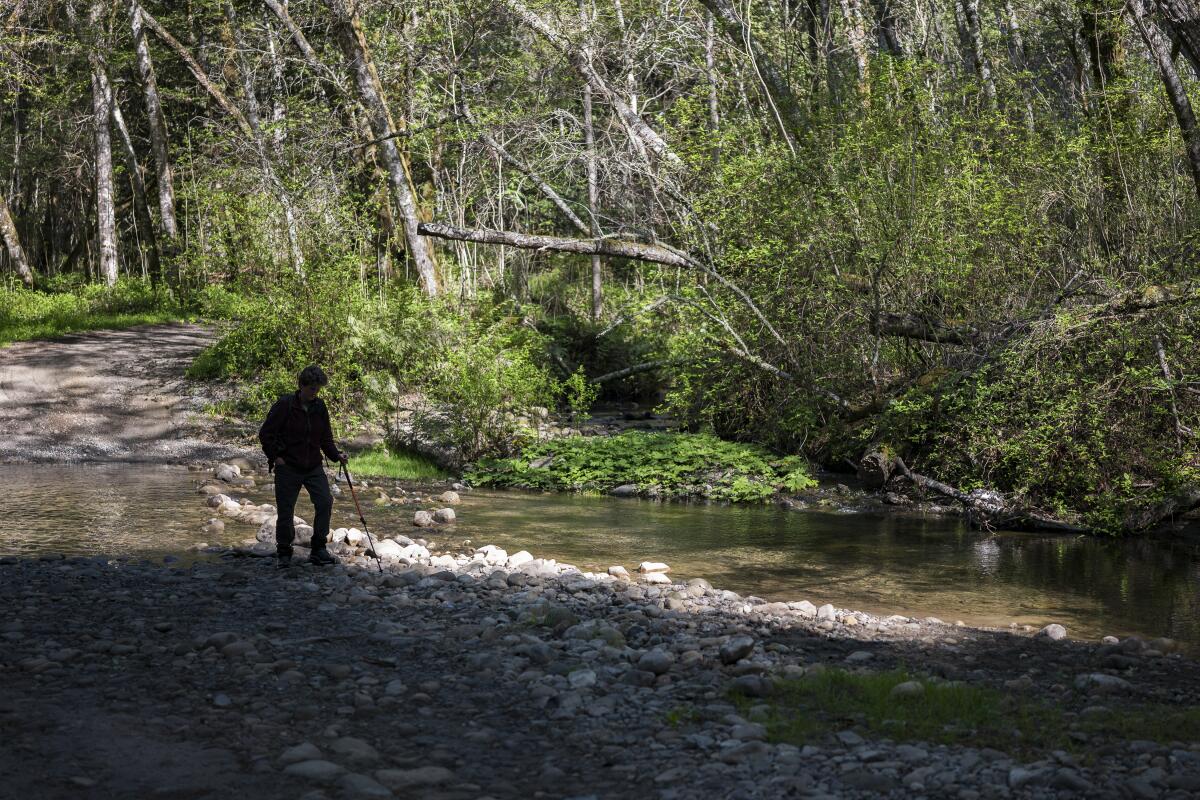
It gave her joy to speak a new language, popping off phrases such as “single reflex DSLR” and learning concepts such as “leading line” to direct a viewer’s eye in a photograph.
Sometimes she took photos of things that at first made her wince and turn away.
On Rabbit Run Road, she saw an eviscerated deer and coyotes in the bushes. When she processed the photos, she looked closely at the deer’s ribs and matted fur, the bloodstains around the coyotes’ mouths.
She took photos of other dead animals so she could, as she wrote in notes to herself, study the “scoop-shaped hands of a dead mole, the zagged blue scales on the belly of a roadkill lizard or the geometry of bare bones” — amazing vessels that had once held life.
Her goal had been to take a photo of something beautiful on every street. But her idea of what could be beautiful was upended.
She became fascinated by men — not in that way. But she had come out at a young age and men had seldom been part of her social circles.
Now, she discovered affable men in garages making things.
There was a man crafting woodworking tools, as his Portuguese family had done for generations. In another garage, a man stacked crab pots he’d made, and outside another a man was in the early stages of carving a violin. All were eager to chat about their projects.
An astrophysicist set out to break a record crossing Death Valley. He took almost no water. Then he began hallucinating.
One day on a bridge, she was trying to take a photo of a falling leaf. She made a pile of leaves and threw one at a time off the bridge, trying to focus and take the shot.
A woman came along and said, “Do you need an assistant?”
The woman slowly threw leaves one after another. When the pile was gone, the woman wished her a good day and continued on her way.
She met a beaming woman who had just sold her first painting, a woman watering her lawn with a blue-headed parrot on her shoulder and a man who wanted to take pictures of manhole covers and then take road trips to the foundries where they were made. She called such moments “micro-friendships.”
On days when she planned to walk, even if it was raining or cold, she couldn’t wait to get out there.
“I’d never experienced that before, being excited to wake up in the morning,” she said.
“The only feeling I can compare it to was being in love. I fell hopelessly in love with everyone and everything.”
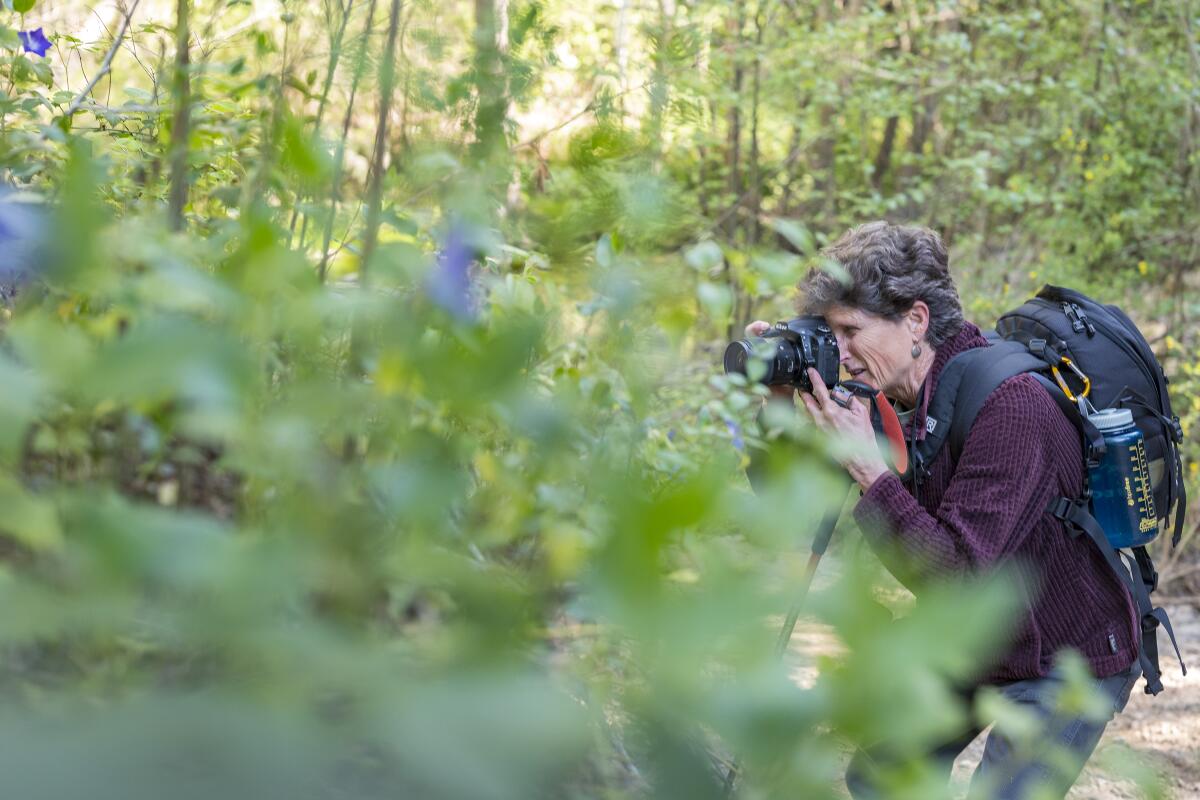
In six years, she had walked 4,121 streets of Santa Cruz County. Even before she reached that milestone, she extended her quest to include walking every marked trail in the county.
She had not previously been a hiker, and this was a new world.
After each hike, she would pore over her phone identifying bugs, differentiating mushrooms, trying to understand how she could come across fossilized sand dollars in Scotts Valley, 560 feet above sea level.
She saw red, green, yellow ladybugs — some with spots and some without — and a gray one with pink wings. She learned there are at least 500 different kinds of ladybugs.
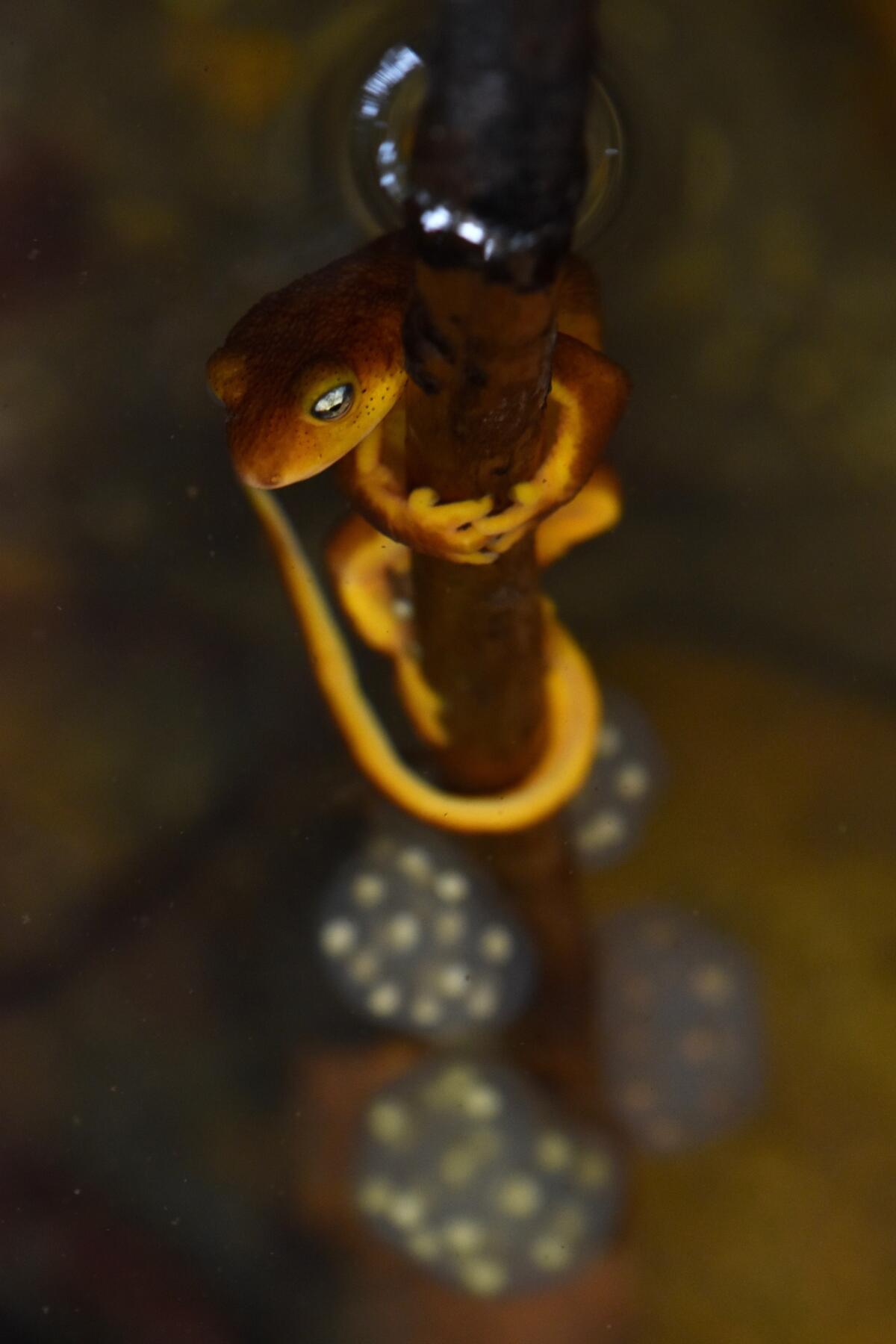
More than once, she felt an almost atmospheric change in the air and noted mountain lion scat.
Her interior journeys also continued.
She thought about Mrs. Sutherland, the English neighbor who had lived across the street. When Glass was a little girl, Mrs. Sutherland often invited her to tea, preparing a tray of fragile cups and saucers. One time when her kindly neighbor started to pour milk into her cup, Glass said, “I don’t want none. I hate milk.”
Mrs. Sutherland offered alternative words: “None for me, thanks. I don’t care for milk.” The words felt like marbles in her mouth as she practiced saying them.
Tea time was 4 p.m. On the days Glass showed up late, Mrs. Sutherland would mildly suggest another day when she could make it on time. When Glass pulled out the only dress she could find, dirty and rumpled, and wore it to tea, Mrs. Sutherland told her to go home and change and bring the dress back; Mrs. Sutherland then laundered and ironed it while they had tea and biscuits. When Glass arrived the next time in the clean, pressed dress, Mrs. Sutherland said she looked like “a proper little girl” and Glass’ heart soared.
Remembering all this as an adult, Glass realized Mrs. Sutherland’s house was directly across the street from where she had found the secret lunches.
Glass had not completely blocked out her childhood. She knew she and her seven siblings had grown up in a filthy house with a violent mother, a passive father and, for a while, her mother’s much younger boyfriend and her father’s girlfriend.
Later, her niece and nephew died at the hands of her older sister’s ex-partner. Her sister became an activist against gun violence after the deaths of Shasta, 2, and Johnathan, 4.
But it wasn’t until her long walks, usually solo, that Glass started drawing connections between Shasta and Johnathan, her own childhood, and why she became a child welfare professional. She had never before ascribed a larger purpose to her life.
National Domestic Violence Hotline
Resources and support 24/7 for anyone in the U.S. affected by domestic violence. Dial: 1-800-799-7233. Chat at http://thehotline.org | Text “START” to 88788. Childhelp National Child Abuse Hotline 1-800-4ACHILD (422-4453)
She interviewed her siblings, trying to lay out the bare bones of their childhood, trying to look at the details as unflinchingly as she had looked at her photos of dead animals.
She kept walking. Her mind wandered between past and future. Sorrows and joys.
She wondered how she could justify spending this time, on what she feared was a frivolous project, in a world with so much trauma. But at the same time it felt as vital to her as breathing.
::
On a recent day, hiking through redwoods in the Santa Cruz Mountains, Glass pointed out how spider webs can reflect rainbow colors when the sun hits just right. Her scientist brother told her it was because the strands of a web have bumps, like beads in a necklace, but the bumps are irregular so they bounce back different wave lengths of light.
The unexpected return of the butterflies to the California coast brings moments of wonder at a time when good news seems rare.
At one startlingly clear stream, she recalled once taking a photograph of a mother newt perched on a stick, protecting her sac of eggs.
In the photograph, she could see clouds reflected in the newt’s eye.
She told her story. She had one now. But there were still unanswered questions.
According to research into adverse childhood experiences, she was high-risk for emotional and physical problems.
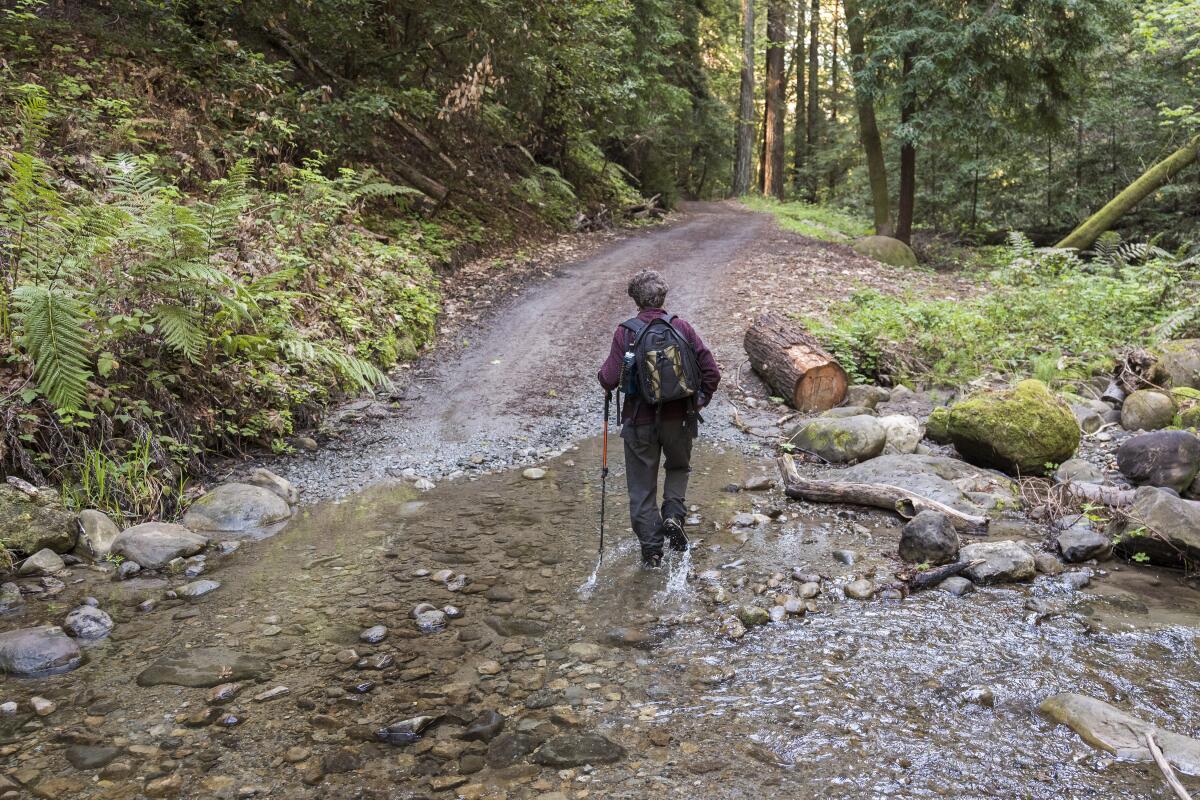
Yet, somehow, here she was at 61 climbing mountains. She had a long-term relationship, a warm connection with her two adult sons, a close-knit circle of friends, and now felt a daily sense of gratitude and joy.
One of the things that had been shown to counteract childhood trauma and increase the chances of resiliency was if a child had at least one adult who looked out for them.
Glass thought of Mrs. Sutherland. She knew little about her, having seen her only through a child’s eyes. She didn’t even know her first name, but perhaps the widow living alone in a two-story house had helped make a lasting difference in her life.
Glass used to believe her walks started as a lark. A stray thought at bath time.
But, now, after walking almost 3,000 miles, while the world beguiled her and her past knitted together, she believes that, although she didn’t know it at the time, the driving force behind her project was “a need, more desperate than profound, to find beauty in the world around me.”
She found it in the world outside her door.
More to Read
Sign up for Essential California
The most important California stories and recommendations in your inbox every morning.
You may occasionally receive promotional content from the Los Angeles Times.
